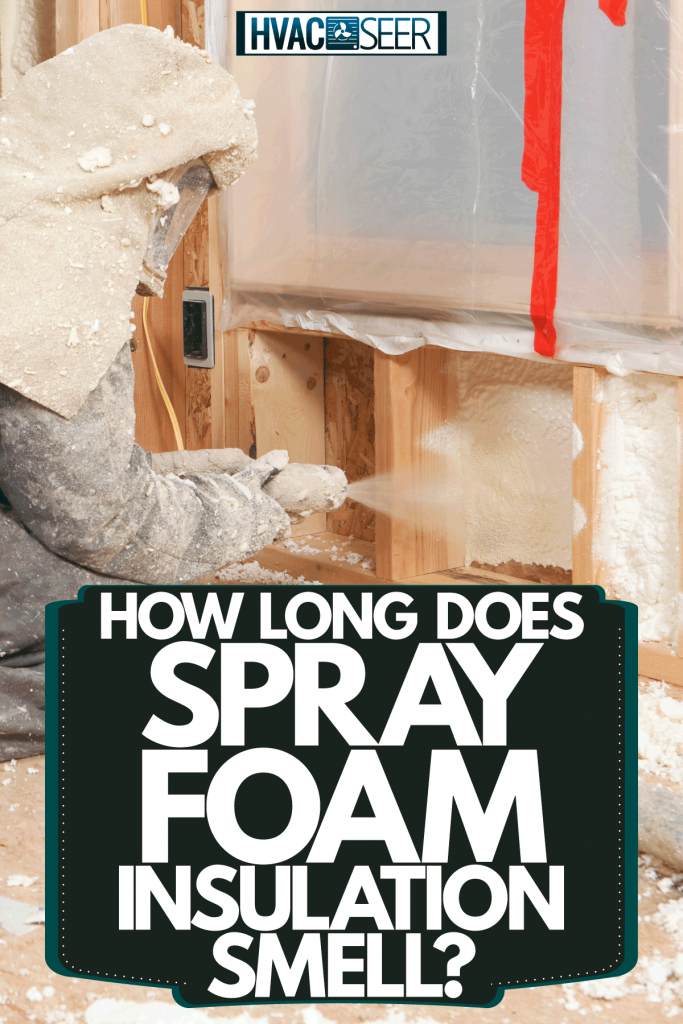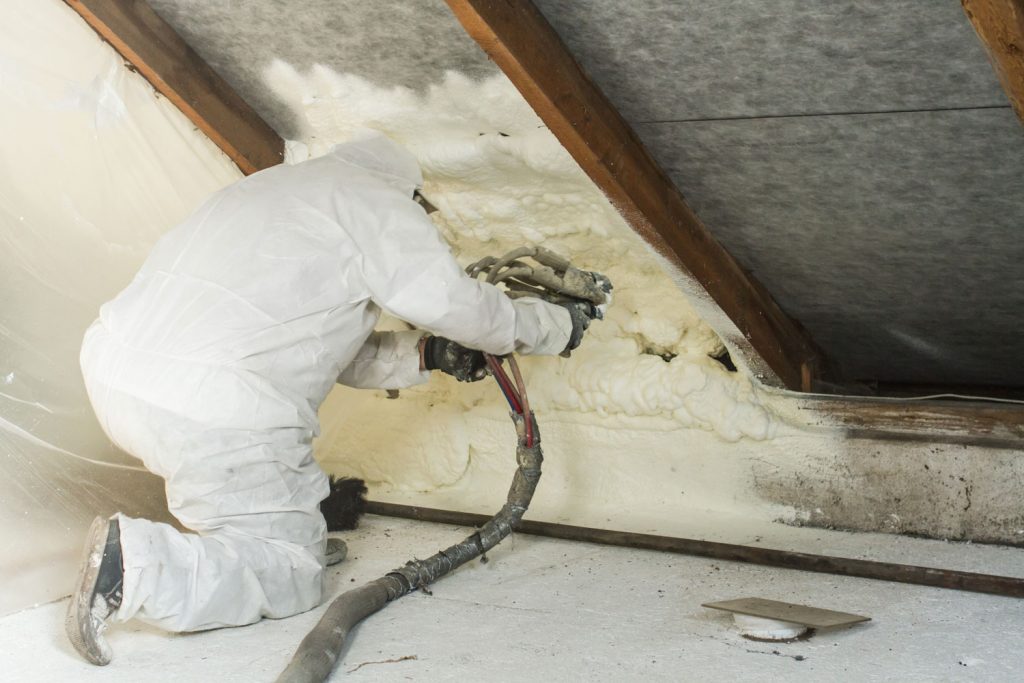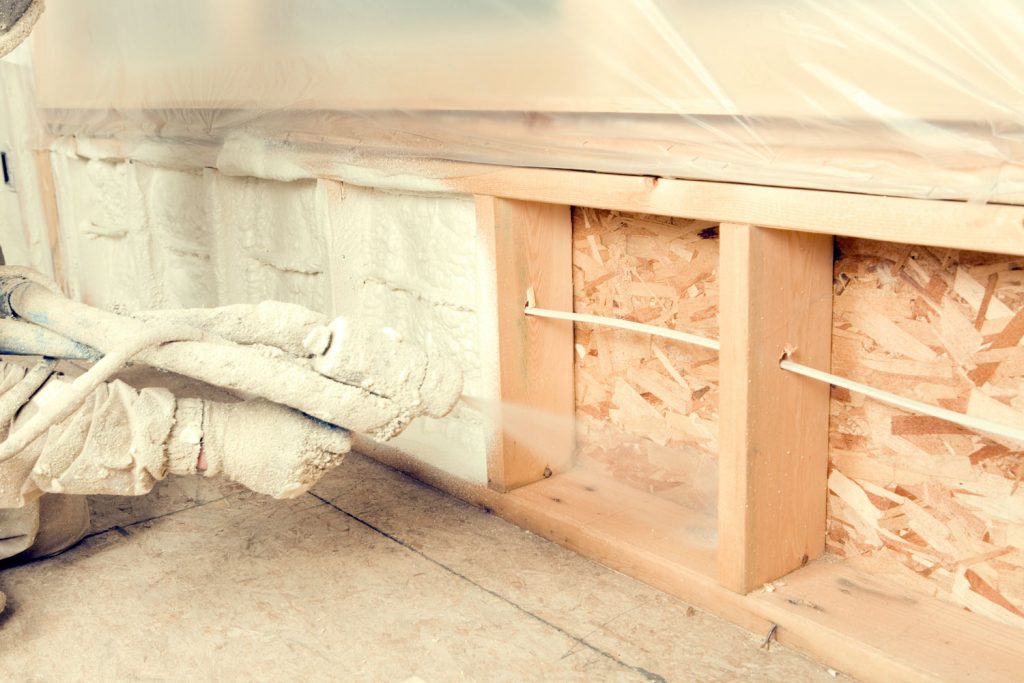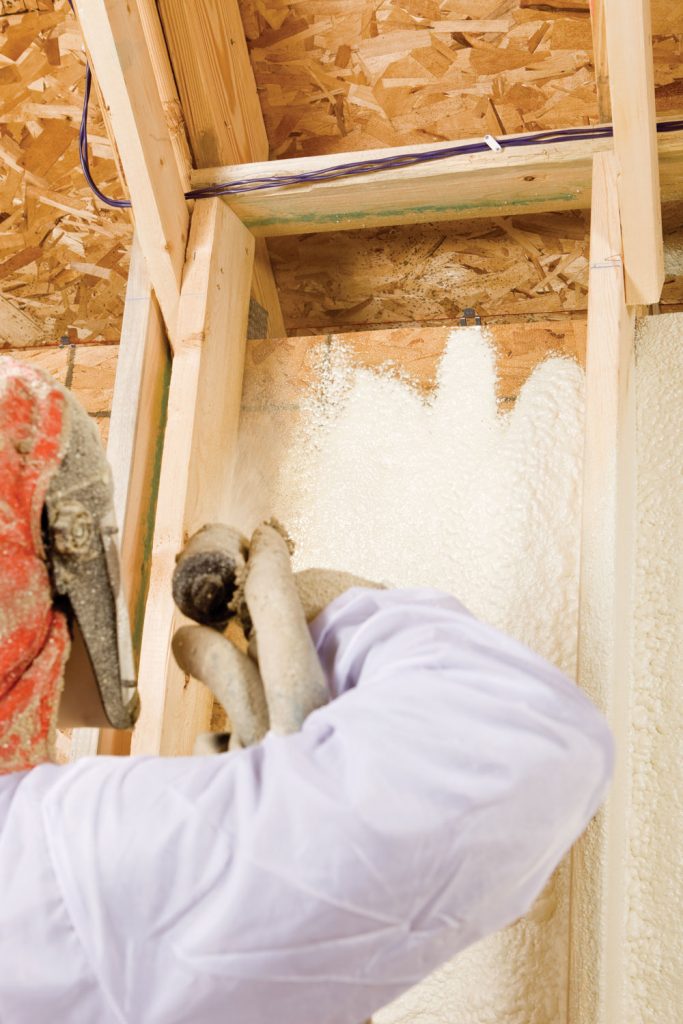After looking for insulation for your home, you settled on spray foam! It's going along just fine until you notice there's a smell. As any homeowner would, it's time to get to the bottom of why that is. How long does it last? If that's what you're trying to figure out, we've done the research to get the answer for you.
The smell of spray foam insulation should last about 24 hours. However, if it lasts any longer, it indicates there is a ventilation issue. Ideally, your contractor will have air exchange units in the area where they have applied the foam. If they have not, here's what you should do:
- Contact your contractor and ask to have air exchange units placed in the area.
- If you applied spray foam yourself, create your own ventilation strategy.
- Seal leaky ducts if you applied spray foam in the attic.
These are the general steps to solve the smell. However, the problem is you can't stop stinky spray foam from smelling. You will have to execute a plan to filter out the smell elsewhere. Of course, to do so, you'll likely need further research. If you'd like to find out how to redirect the odor, keep reading ahead.

Are Fumes From Spray Foam Insulation Dangerous?
Let us first get the crucial concern out of the way. Are the fumes from spray foam dangerous? They are harmful under certain conditions. It can have a negative impact on health, especially those with asthma.
Chemical Reactions
To understand why that is, we'll have to cover the process the foam goes through when you apply it. During its formation, two chemical reactions take place. The first reaction contains a chemical known as isocyanates.

If you have ever wondered why you wear protective gear to apply foam, isocyanates are the essential concern. They are known to irritate respiratory tracts, the mucous membrane of the eye, and the gastrointestinal tract. So, people with pre-existing conditions should avoid inhaling it as it can aggravate health symptoms ranging from acute to severe.
However, the second reaction reaches inconclusive data. In other words, there isn't enough research on the dangers it presents to the workers and the people living in the home. It doesn't rule out the potential hazard of inhaling it.
Inhaling the Fumes
Exposure to the chemical can pose harmful risks. As some suggest, there is no recognized safe level of this chemical in the air. Others add on, suggesting that it can lead to the potential development of asthma along with skin and eye irritation.
Off-gassing
Off-gassing is a natural occurrence that occurs during the curing process. When it happens, it leads to volatile air quality, strong chemical smells, and potential hazards to anyone who inhales it. How long the odor can linger is up to a few factors.
Ventilation is one concern that we have already covered. Essentially, restricted airflow slows down the process. The other concern, as some suggest, is the amount of foam you use. A large application of spray foam can necessitate a need for a longer time for the off-gassing process.
How Long Do You Stay Out of Your House After Spray Foam Insulation?
After applying spray foam insulation, you need to give it time to cure. So, it is advisable to stay away from your home for at least 24 hours. If you want to be as safe as possible, you should stay away for up to 72 hours until it cures. As mentioned, the area you applied the foam to should be well-ventilated.
Eliminating the Smell
To eliminate the smell, you will have to come up with a ventilation plan. The first step in the right direction is to find out why the spray foam is stinky. Spray foam stinking up the house rarely happens! It only happens if the chemicals were not mixed properly, there's a crack in the foam, or from improper installation of the foam.
Contact the Foam Spray Manufacturer
For the first situation, you will want to contact the manufacturer. As you might already know, spray foam comes in two chemicals. Before you get foam, you mix the chemicals beforehand. Though, if the ratio is off-balance, it will produce a noxious odor. It also means the foam is not insulating correctly.
The second reason the smell will be roaming around in your home is improper ventilation. Before, during, and after the process of applying the foam, your contractor should have adequate ventilation to allow the spray to off-gas properly. Without proper ventilation, the odor will not dissipate.
Sealing Leaky Ducts
If you applied spray foam in your attic, the solution to the smell could be simple. Since the foam is in the attic, it could indicate you have leaky ductwork. Preventing the smell from coming down is as simple as sealing your return ductwork in particular. Though, the attic will still be stinky.
Creating Your Own Ventilation Strategy
Exhaust Fan
When sealing the ductwork does not work, you might need to install an exhaust fan. In this sense, the air will circulate from your living space to your attic. The smelly air will exit from the exhaust fan. Though, this can potentially make your living space a negative pressure zone.
Mechanical Ventilation System
Mechanical ventilation systems exchange old air for fresh air. It does so by filtering the outdoor air before it enters your home. The one that works best with an exhaust fan is a ventilating dehumidifier. When you pair them together, it balances the amount of air brought in and out of your home.
Sealing the Attic
The last option you have to prevent the odor from leaking into your living space is to seal the attic. If you go with this option, it should be without doing the two mentioned above. The first spot you can close is the top plate. You can find the top plate on top of the framed wall in the highest story of your home.
To go along with this, you should seal any penetrations between the attic and your living space. In essence, this process prevents air exchange between the attic and your living space. Though, it comes with its own set of problems.
By sealing the attic, there will be a lack of airflow. With little to no airflow, it can create a humidity problem. For this to work with no trouble, you might have to install a dehumidifier. Though, before you do, you will have to keep an eye on the relative humidity. You will have to watch and see if the air is holding moisture.
Air Filter
In any case, you can also add an air filter to go along with it. Since our situation calls for reducing/eliminating odor, an activated carbon air filter is your best bet. It absorbs and filters strong smells.
Why Does Spray Foam Smell Like Fish?
A fishy smell coming from spray foam indicates that there is an improper chemical ratio. In other words, the instructions were not followed accurately. The ratio of chemicals should be one-to-one. In cases like these, the foam never cures to the ideal end product.
However, if the ratio is correct, the other problem might be the area of application. If the passes are too thick, it does not allow the foam to cure properly. In any case, for future reference, you shouldn't apply spray foam in passes or lifts that are 2 to 3 inches thick.
How Can You Tell if Spray Foam Is Bad?
You can tell spray foam is bad from the way the contractor applied it. The first sign that you can look out for is how thick the layer is. It should not be applied in layers that are thicker than 2 inches. If it is, it will not take too far to see the chars it can cause. When peeled, the interior of the foam will have a yellow color.
For a visual representation, here's a YouTube video to help:
For additional examples of bad spray foam, here's another YouTube video:
It leads us to another topic. There are certain areas where you or your contractor should not apply foam. Doing so can cause fire hazards.
Where Should You Not Use Spray Foam Insulation?

You mustn't apply spray foam in inappropriate areas. These areas include spots that contain wiring, pot lights, and more.
Electrical Boxes
There is a specific type of foam that can be applied here. In general, if you want to apply spray foam in these areas, you should use a low-expanding form. Otherwise, it's advisable not to apply it anywhere near it. It can expand too far, reaching the inside of the electrical box.
In the best case, it can jam some parts. On the other hand, it presents fire hazards. You are essentially exposing flammable chemicals to an electrical source.
Ceiling Lightboxes
Another area to avoid applying foam is near ceiling lightboxes. Spray foam is an insulator. Lightboxes generate heat. When combined, you create the potential to start a fire. However, some lightboxes are insulation contact rated. In essence, you can spray foam directly on it.
Still, you will want to consult with a professional that can advise for or against it.
The Roof
Open-cell foam presents the potential to rot the roof sheathing. It does so by allowing moisture to escape through it, reaching the roof. Over time, it accumulates and rots the area. If you want to insulate the roof, you should opt for closed-cell foam.
Consult a Professional
In any case, before applying spray foam, you should seek the advice of a professional. The potential to mess up installation is too high regarding expenses and health concerns. You can't remove the foam without making a lot of additional considerations.
How Long Does It Take for Spray Foam To Cure?
As mentioned above, it generally takes around 24 hours to cure. Though, it may take up to 72 hours to be on the safe side. This timeframe is pertinent to people with pre-existing conditions.
Final Takeaway
Although the odor can be a pain, it is a symptom of a potential danger to you and others. So, it's crucial that you become familiar with the hazards of having that air circulate in your home. We hope you found the solutions above insightful!
Before you go, do you need other ways to improve air circulation? More specifically, in rooms without a window? If you'd like to find out more, check out our post here.
Are you curious if foam insulation needs a vapor barrier? To find out more, check out our post here. Until next time!

